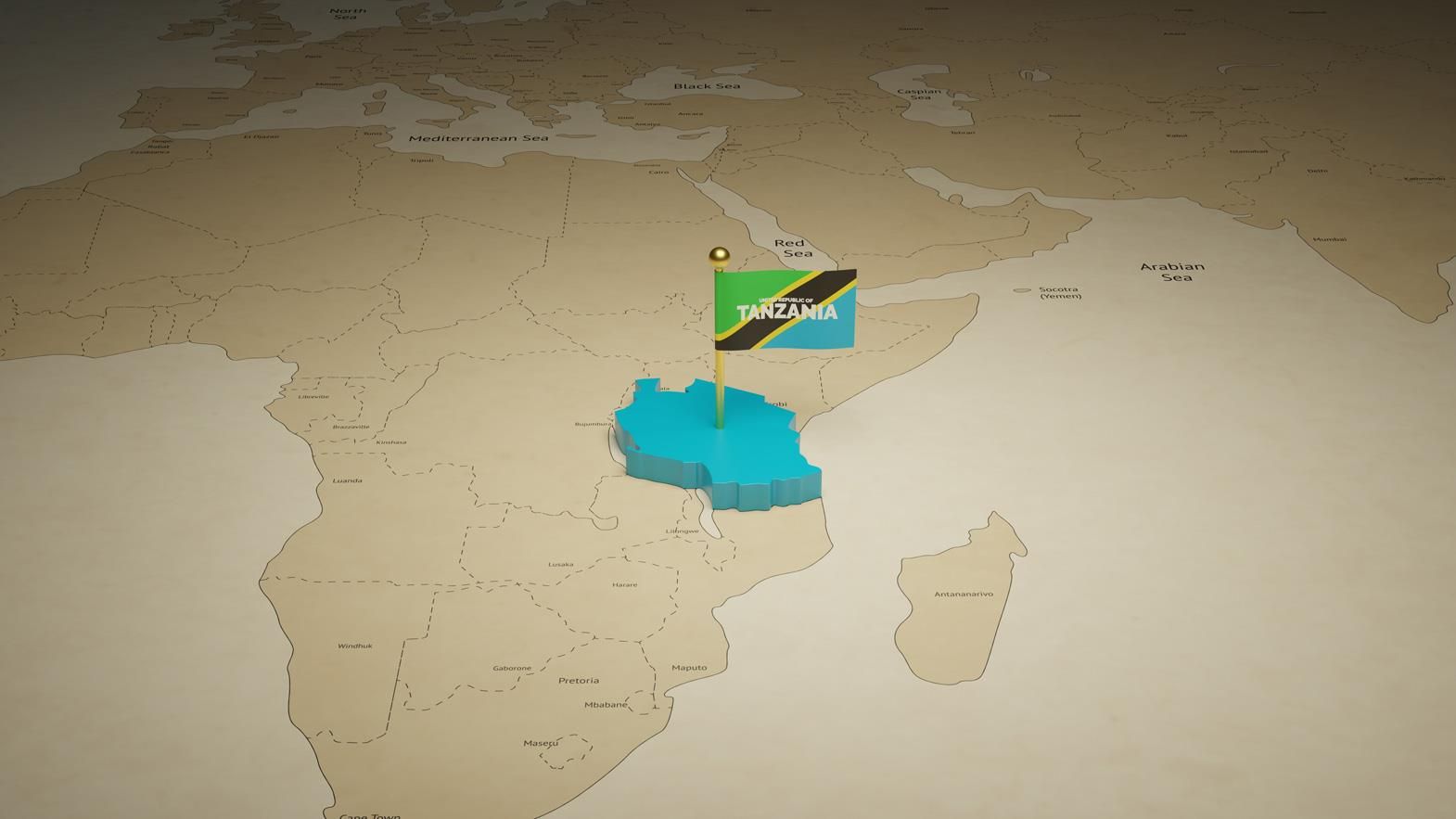There arevery few who know that companies like VF, Levi's and Primark are alreadysourcing from Tanzania. It has a number of industry-oriented policies andstructures in place for anyone working in the cotton-textile-apparel chain. Thecountry is one of the more stable ones in Africa, and has a relatively high GDPgrowth. It is not without reason that Asian investors are eying Tanzania,reportsJozef De Coster from Dar es Salaam.
The East African country ofTanzania has the potential to become the next hot apparel destination, challengingcountries like Myanmar and Ethiopia. That is at least the point of view sharedby the country's Textile Development Unit (TDU) and a number of pioneeringinvestors and brands. Tanzania's new Five Year Development Plan (2016-2017 to2021-2022) is clearly supporting the further development of thecotton-textile-supply chain, but not enough. A brave global vision on thesector's future is still lacking as well as the sense of urgency needed tocatapult Tanzania into the list of leading apparel exporters.
Few people know that companieslike VF, Levi's and Primark are already sourcing from Tanzania. A number oflarge buyers from the US and EU either have already visited Tanzania or willsoon do so. Just like it successfully did for Kenya and Ethiopia, Phillips VanHeusen (PVH) is trying to warm up some of its Asian suppliers for an investmentin Tanzania, also a country that benefits from the African Growth andOpportunity Act (AGOA).
Theoretically, Tanzania hasprobably more comparative advantages for making/exporting garments than anyother country in Africa. 'Tanzania, the best overall location for apparelmaking in Africa', is the slogan of Tim Armstrong, the investment promotiondirector of Tanzania's Textile Development Unit (TDU). Of course, the devil isin the details.
Foreign textile and clothingmanufacturers, like two visitors who were recently scouting Tanzania inpreparation of a possible investment from one UK/ Bangladesh firm and oneIndian firm, detected a number of issues and bottlenecks in the country'scotton-textile-apparel supply chain. However, they continued thinking that,given developments in China and South East Asia, the best time to mouldTanzania into a successful apparel export country is now.
The brightside of Tanzania
The TDU is a partnership betweenthe Tanzanian government and the charitable organisation Tanzania Gatsby Trust.Investment promotion is one of its priority areas of work. The TDU was quitesuccessful in drawing the attention of some large buyers and manufacturinggroups on Tanzania. Recently, representatives from companies like CherryField(Turkey), TAL Group (Hong Kong), Sae-A (South- Korea), A&A Shandong(China), Needlecraft (Jordan), Pentex UK, Shibufei (China), KAPL (India), Echo(UK), Ridham (India), Arvind (India) and Raymond (India) visited Tanzania. Manyother companies are expected to come soon with a delegation this March with amajor retailer.
The TDU stresses that Tanzania has
more to offer than duty-free market access and abundant, English-speaking
workforce, like several other African countries do. Tanzania has the largest
cotton production, ginning and spinning capacity in the region. Thanks to the
hundreds of millions of dollars invested in the textiles industry by the
socialist government of Julius Nyerere, the number of textile mills grew from
four in 1968 to 35 by the early 1980s, employing 37,000 people. As a
consequence, Tanzania still has considerable textiles expertise in the
production of yarns and knitted and woven fabrics. Its textiles industry is
considered clean and socially compliant. New investors can find available
greenfield land with some existing sheds for rapid start-up. Tanzanian cotton,
cultivated by more than 400,000 farmers, is rain-fed, handpicked and grown
using little pesticides.
And that's not all. At the start
of 2016, Tanzanian investment promoters can boast that the attractiveness of
the country is enhanced by at least three interesting new elements. Tanzania,
which already has three international airports and four ports, is now building
some 50 km north of Dar es Salaam, a showcase megazone with integrated port-to
be the biggest on the East African Coast (Bagamoyo Portside). Its huge gas
reserves recently started to feed the national grid, guaranteeing a reliable
power supply. Then, there's the new president John Magufuli, nicknamed "the
Bulldozer". It is widely believed that under Magufuli the remarkable
social and political stability and constantly high GDP growth (6.7 per cent on
average since 2010) of Tanzania are safe. What's more, Magufuli has the
ambition and talent to get things done. Tax evasion and corruption are likely
to get a blow.
Tanzania's Export Processing Zones Authority (EPZA), which started operations in 2007, successfully attracted garment manufacturing companies and other investors in the first government-owned industrial park known as Benjamin William Mkapa Special Economic Zone, near Dar es Salaam. Today, the EPZA is developing mega zones in the form of industrial-cum-commercial cities in Bagamoyo, in the southern port city Mtwara, in Dar es Salaam (Kurasini) and Kigoma. Some regions in Tanzania have identified investment opportunities especially for cotton growers and textiles manufacturers.
This is, for example, the case of
the Tanga Region, north of Dar es Salaam. The Tanga Region is proposing
investments in large and small-scale cotton plantations and ginneries. It also
proposes textile manufacturing projects in a (National Development Corporation)
(NDC) site with 100 plots and in the export processing zone in the Neema
Industrial Area.
Some issues in the supply chain
So, what could stop the rise of
the Tanzanian cotton-textile-apparel sector when this sector is enjoying so
many comparative advantages? It appears that not one, but several factors are
hindering the smooth running of the supply chain. Such factors can be detected
for instance in cotton farming and in maritime logistics.
Efforts by some elements of the
ginning industry to introduce contract farming in the Tanzanian cotton sector
have initially shown very promising results. Then, some opponents of the system
used their financial and political powers to frustrate it. This resulted
recently in a drop in Tanzanian cotton production. However, there appears to be
a positive conviction within the industry that contract farming offers a
mechanism to reverse the decline in national cotton production.
Another problem is the longer lead
times for in-bound Asian piece goods. But industry sources say that customs clearing
times are improving rapidly thanks to the recent Magufuli shakeup of customs
and the new on-line clearing system-Tancis. Furthermore, the Shippers Council
of Eastern Africa (SCEA) has recently announced that Dar es Salaam port in
Tanzania was the best performer in East Africa in 2015.
Tanzanian
textile groups are expanding
It is very unlikely that Tanzania
could soon become a billion dollar apparel exporter without an important inflow
of FDI. This does not mean, however, that the domestic textiles groups have no
growth potential. Especially, Mohammed Enterprises Tanzania MeTL Group and A to
Z are eagerly proving they have.
The MeTL Group is Tanzania's largest homegrown company. It has a turnover of more than $1.5 billion, employing more than 25,000 people. CEO Mohammed Dewji expects his group to hit total revenues of $5 billion by 2018. MeTL employs more than 4,000 people in the group's three textile mills in Tanzania (a fourth mill is operating in Mozambique, and MeTL is at present also considering textile investments in Zambia, Malawi, Ethiopia). The largest of the group's textile mills, 21st Century in Morogoro, has just installed a state-of-the-art knitting and garments factory, aiming to produce ultimately 6.6 million pieces of polos and t-shirts annually.
A to Z Textile Mills in Arusha is
mainly known for its treated mosquito nets. When in February 2008 US President
George Bush paid a state visit to Tanzania, he visited A to Z, at that moment
the only net producer in Africa certified by the World Health Organization. A
to Z is a 50-50 joint venture between the Japanese multinational Sumitomo
Chemical and Arusha A to Z Textile Mills.
Employment in A to Z reached 7,605
by the end of 2014. Further growth can be expected since the company has widened
its business to the stitching of underwear, t-shirts and polo shirts.
Also, some other homegrown
companies have great expansion plans. Namera Ltd is setting up a new knitting
and garment factory. The sportswear producer Mazava Garments Ltd in Morogoro, which
in 2014 exported 12 million pieces made from synthetic knitted fabric under
AGOA (thus enjoying a 30 per cent tariff preference), is now considering to
triple its production.
Asian
textile investments and projects
Tanzania has already some experience
with Asian textile investors. The appreciation is mixed. Some investors, like
Sumitomo from Japan, Sunflag from Indian origin and Dahong from China did a
great job helping to grow and upgrade the country's textile and/or garment
industry. A few other Asian investments left a bitter taste. According to the
Centre for Research on Multinational Corporations (SOMO), Apparel Tri-Star from
Sri Lanka was roaming Africa, setting up shop in one country after another.
Tri-Star Tanzania was established in 2003 and closed down in May 2005 without
giving any notice to the workers or paying them any benefits. The Chinese
investment in the state-owned Tanzania-China Friendship Textile Company Ltd ('Urafiki'
in Swahili), which started in 1968, is still operational but in a much
diminished form. Employment peaked at 5,000 during the eighties. When at the
end of January 2016, the Tanzanian minister for industry visited the mill,
employment stood at 850, a large part of the machinery had been sold as scrap,
and some machines were not operational due to lack of mechanical experts.
However, new Asian FDI is finding
its way into Tanzania. China's JD United Manufacturing Co, which produces
garments primarily for the US market for customers like Levi's, sought a new
place for production, ultimately choosing Tanzania in 2012. Among other
benefits, JDU cites the rich incentives of Dar es Salaam's Export Processing
Zone where in 2012 it established a garment factory with 500 workers called
Tooku. In 2015, employment increased to 1,300 people. This year, Tooku intends
to double employment to 2,600 workers. By 2020, the company wants to employ
5,000 people. The idea is that the bigger scale of the operations will have a
positive impact on the scale of orders and hence on profitability. Tooku acts
mainly as a cut, make and trim (CMT) producer under AGOA for VF, but has also
customers from Europe. Primark is one of them.
The Indian group Ridham
Texport is now looking for investments in East or Southern Africa preferably in
Tanzania, Mauritius or Mozambique. In Tanzania, Ridham has already selected a
location where it could start a fine fabric production plant with yarn dyed
checks. The group wants to integrate backward step-by-step. The target markets
for exports will be South Africa, EU and the US, as well as China, India and
Far East countries. Ridham also wants to cater to local markets. The group has
plans to invest $5-6 million initially and then to bringin more funds. It is
also planning to establish a Global Organic Textile Standard (GOTS) certified
organic cotton business.
If the design-to-delivery apparel supplier Echo Sourcing, which is currently exploring Tanzania, would decide to make the jump and to invest $27-30 million (of which $10 million with own money and the rest borrowed), more than a few things will change in the Tanzanian garment industry. Echo Sourcing has its head office in London, a sourcing office in Dhaka, and three factories in Bangladesh (Echotex Ltd) which together employ some 12,000 people. The company, which lists many major European fashion retailers as clients (H&M, Primark, NewLook, Sainsbury's, Fat Face, Inditex ) is headed by the British-Bangladeshi entrepreneur Quais Shafiq ul Hassan, who loves being at the frontline of corporate social responsibility (CSR). One of the great ambitions of Echo Sourcing is creating a totally transparent integrated business, from organic cotton to fashion. Another one is the launch of the sustainable brand Ninety Percent: 90 per cent of the net profit will be given away, 80 per cent to a cause of the consumers' choice and 10 per cent to the workers who make the garments and people who run the brand.









Comments